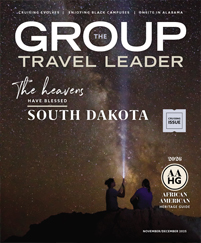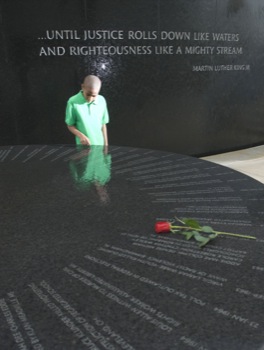 Courtesy Montgomery CVB
Courtesy Montgomery CVB
Rosemary Judkins is passionate about her state’s history, and rightly so. Of all the great stories in America’s past, the 20th-century struggle for African-American civil rights is among the most compelling. And although many states were involved in the civil rights movement, perhaps none was as fundamental to it as Alabama.
“We believe that Alabama was the heartbeat of the movement,” said Judkins, group travel manager at the Alabama Tourism Department. “There were things that happened all over the country, but a lot of it actually started here.”
This history is such a part of Alabama’s legacy that the state’s tourism department has created the Alabama Civil Rights Trail, which includes Birmingham, Montgomery, Selma and a number of other communities. Groups that travel the trail will see important historic sites, as well as several museums dedicated to telling the story of the civil rights movement and the people who propelled it.
Whether you remember the 1960s vividly or are too young to have been there yourself, a trip down Alabama’s Civil Rights Trail will introduce you to new aspects of this powerful story.
Montgomery milestones
In many respects, the modern civil rights movement got its start in Montgomery in 1955 when Rosa Parks was arrested for refusing to give up her seat to a white passenger on a city bus.
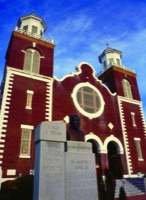 |
| By Dan Brothers, courtesy Alabama Tourism Dept |
“Montgomery was one of the pivotal locations for the civil rights movement,” said Dawn Hathcock, vice president of the Montgomery Area Convention and Visitors Bureau. “Rosa Parks and her role in the bus boycott were very important. We were one of the only areas that Martin Luther King Jr. and Rosa Parks lived in at the same time.”
Today, a number of museums and historic sites detail Montgomery’s milestones in the civil rights movement. A good place to start is the Rosa Parks Museum, which has displays on Parks, the bus boycotts and other people who took part in the effort. Exhibits include Parks’ original arrest records, fingerprint card and mug shot, as well as numerous other historic artifacts.
“When you go through and see everything, you’re kind of caught up in the moment and feel everything,” Hathcock said. “Then when you get to the end, they show a clip from one of President Clinton’s State of the Union speeches where she was invited to sit up there with the first lady.”
Next, pay a visit to the Dexter Avenue King Memorial Baptist Church and Parsonage, the church where King served as senior pastor during the height of the civil rights movement. Groups can tour the church sanctuary and stand in the pulpit where King preached. The parsonage is now preserved as a historic site with a number of original furnishings from King’s time there.
Also in Montgomery, the Civil Rights Memorial Center has exhibits that cover the history of the movement and efforts that continue today.
Flashpoints in Birmingham
During the 1960s, a number of tense situations put Birmingham in the middle of the national civil rights spotlight. One of the most memorable was the bombing of the Sixteenth Street Baptist Church, which killed four young African-American girls in 1963.
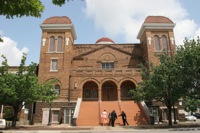 |
| By Jeff Greenberg, courtesy Alabama Tourism |
“We have a lot of visitors that come to experience the civil rights movement and to go to Sixteenth Street Baptist Church,” said Tara Walton, director of tourism at the Birmingham Convention and Visitors Bureau. “Sixteenth Street is really what put everything out in the forefront. It’s the first time there was a massive loss of life with young people, and it placed us in the national spotlight.”
After some reconstruction and refurbishment, the building again became an active house of worship; last year, it also became a National Historic Landmark, and it now features a memorial exhibit for visitors interested in civil rights history.
From Sixteenth Street, groups can proceed to Birmingham’s Civil Rights District. The area includes public memorials at Clay Engels Park, where some demonstrators were attacked with dogs and water cannons, and the Fourth Avenue business district, where many African-Americans owned businesses that helped to fund the civil rights movement.
The district is also home to the Birmingham Civil Rights Institute, where murals and galleries highlight the conditions that Jim Crow laws created throughout the South. Exhibits show pairs of water fountains and school classrooms that were segregated and demonstrate the disparate conditions and facilities available to the two races.
Selma’s Bloody Sunday
In 1965, civil rights activists organized a peaceful march from Selma to the state Capitol in Montgomery to protest the shooting of a young African-American during a voting rights demonstration. When the group of 600 reached the Edmund Pettus Bridge, they were attacked by state troopers, and the event became known as “Bloody Sunday.”
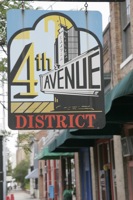 |
| By Jeff Greenberg, courtesy Alabama Tourism |
A few weeks later, King led a successful march from Selma to Montgomery. Today, visitors to Selma can see sites related to both marches.
“We have the Edmund Pettus Bridge, which they crossed over on Bloody Sunday and also during the peaceful march,” said Candace Johnson, tourism director at the Selma-Dallas County Convention and Tourist Bureau. “There’s a historic marker at the foot of the bridge and a memorial park on the left side that they can visit.”
On a civil rights tour of Selma, visitors will also see Brown Chapel A.M.E. where the activists would meet to plan their marches and protests. Another favorite stop is the Old Depot Museum, a converted train station where King once stayed that now has a gallery dedicated to civil rights leaders.
At the National Voting Rights Museum, visitors will learn about the struggle for black suffrage that inspired many civil rights reformers.
“They have a Footprints of Freedom tour,” Johnson said. “It takes you through the museum and into a room where Foot Soldiers have made casts of their footprints. They have a uniform of Jim Clark, who was the sheriff at that time, and the actual shoes worn by a woman in the march over the bridge.”
For more information visit the Civil Rights Trail website.
More about the trail:







